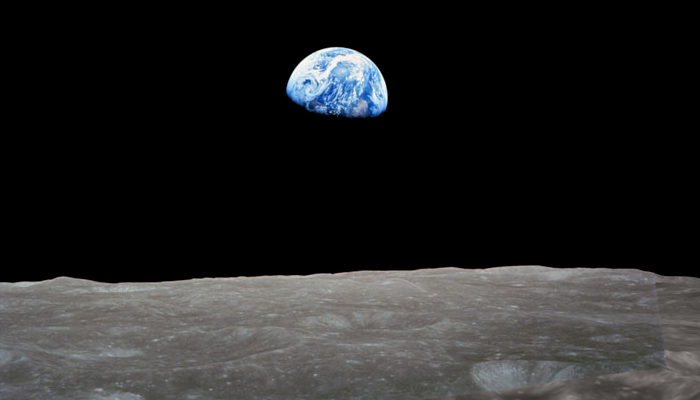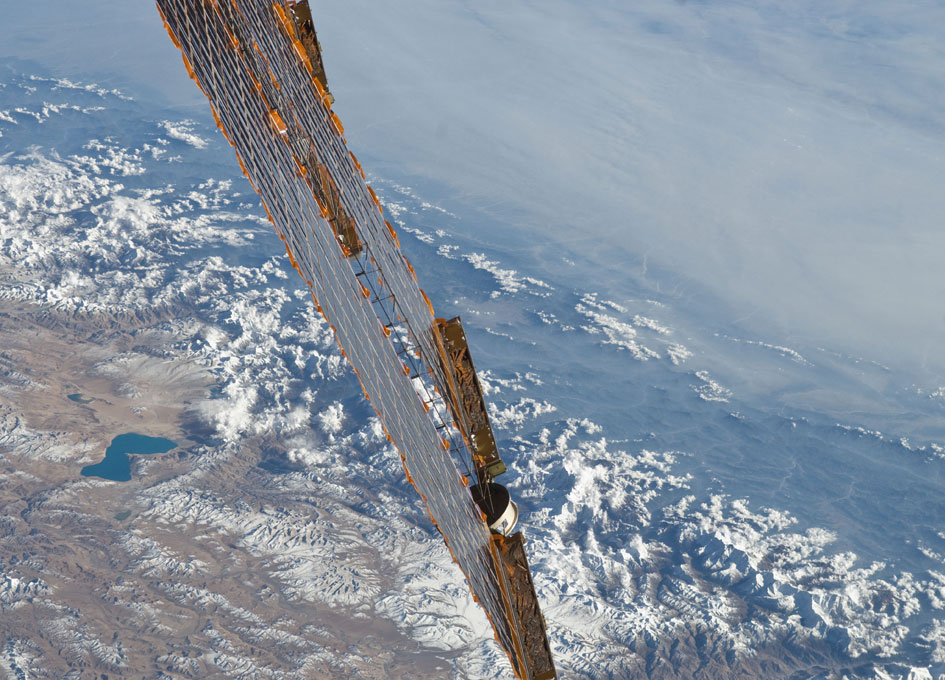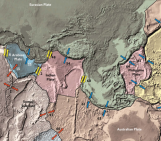
This edition of “Beyond Tectonics” is brought to you by David Waltham. David is a professor of Geophysics at Royal Holloway who studies Geology, Astronomy and Astrobiology. His current research focus is on whether the Earth is “special” because it is habitable, or if the Earth is one of a vast amount of life-bearing planets.
“Is Earth Special? Do we live on a typical rocky world or on one of the oddest planets in the Universe? Are planets capable of harbouring life common across the Cosmos or are our nearest habitable neighbours so far away that we’ll never find them? We don’t know!”
What does a planet need to be habitable?
This huge question can be broken down into smaller, more specific chunks. Do habitable planets have to have large moons and, if so, how common are they? Do habitable planets have to have magnetic fields and, if so, how common are they? Do habitable planets have to have just the right amount of water and, if so, how common is that?

A portion of the Hubble deep field image containing around 3,000 galaxies. image credit: Wikipedia
You might think that we’d know the answer to at least some of these more focused queries but we don’t. You can see the review of the current lack of knowledge on these, and other puzzles, here (Waltham 2019). In this edition of Beyond Tectonics, we will be focusing on the question of if habitable planets must have plate tectonics and, if so, how common is that?
Plate Tectonics and Habitability
The most obvious way in which plate tectonics might contribute to habitability is its influence on climate or, more specifically, climate stability. Earth’s climate is surprisingly stable. In these times of concern over climate change this probably sounds a little heretical but, when looked at over billions of years, the thing that is most striking, is how little our climate has changed. We’ve had four billion years of “good weather”, in which temperatures never dropped so low that our world froze completely (although, it did get close on a few occasions) or so high that a runaway greenhouse effect set in leading to planet-wide desiccation.
The fossil record shows that biodiversity is massively affected by even quite small temperature changes (e.g. a mere 3% temperature rise probably caused the end Permian mass-extinction (Penn et al., 2018) and so climate stability is an important, and often overlooked, component of habitability. However looking at Earth’s history, and future, the climate should be unstable. Over the 4 billion years life has existed on Earth, the Sun’s luminosity has increased by 30%. Over the same time period, the composition of the atmosphere has altered radically, as has the amount of heat our planet reflects back to space from ice, clouds and the changing continents. Temperatures should have fluctuated by hundreds of degrees, but they did not, which is probably due to plate tectonics.
The big picture here is that Earth has benefited from a coincidence. As the Sun has steadily warmed over the aeons this has been compensated by a drop in greenhouse gas concentrations at just the right rate to keep Earth habitable. Part of the explanation for this is that outgassing of carbon dioxide from the mantle has been dropping as our planet has cooled. Earth’s cooling has only been at the required fast rate because of plate tectonics. Subduction of cold lithosphere into the mantle is a much more efficient cooling mechanism than conduction of heat through a stagnant crust (as happens on every other rocky body in the Solar System) and so our planet cools much more quickly than it otherwise would.
The Silicate weathering cycle
Regardless of the change in outgassing rate over time, without the Silicate weathering cycle, CO2 outgassing would cause runaway warming eventually making Earth Venus-like. Carbon dioxide concentration—and hence temperature—of the atmosphere is kept low because of the silicate weathering cycle. Carbon dioxide dissolved in rainfall is slightly acidic and dissolves silicate rocks at the surface to produce, among other things, bicarbonate ions in the water draining to the sea (Raymo and Ruddiman 1992). These, in turn, precipitate in the oceans to give carbonate sediments and, hence, atmospheric carbon is turned into solid rock thereby removing it from the atmosphere. This process only occurs because plate tectonics continuously replenishes the supply of un-weathered silicate (via mountain building/orogeny, e.g. the Himalaya) and because plate tectonics maintains Earth’s dichotomy of continents and oceans.
These carbonate sediments which build up on the ocean floor are eventually subducted with large volumes of hydrated ocean plate (water ingrained in the chemical structure of the rock). Earth’s interior contains more water than there is on the surface but, without subduction of these water-rich sediments and rocks, all of it would have found its way to the surface by now. If this were the case, then at the very least our planet would be a water-world without dry land. Although, it is more likely that without the silicate weathering cycle and with enhanced atmospheric water vapour levels, our planet would have undergone a Venus-like process of wet, runaway greenhouse warming swiftly followed by desiccation as hydrogen from dissociated water in the upper atmosphere was swiftly lost to space (Kasting 1988).

The Himalaya photographed from the International Space Station. Image credit: NASA
How important is plate tectonics for planetary habitability?
Plate tectonics should be seen as a prerequisite of planetary habitability. The arguments for plate tectonics being central to habitability are stronger than for almost any other property of our planet. They’re certainly far stronger than those arguments supporting more frequently met suggestions of the centrality of our large moon or of our strong magnetic field (Waltham 2019).
Plate tectonics is therefore important to planetary habitability but is it rare? Our planet is not special in this regard if plate tectonics is common on Earth-sized rocky worlds. Unfortunately, at this time it is not known for certain whether plate tectonics is common or rare. Sophisticated mathematic models of planet-scale convection have not given us a clear answer either. Some of these models suggest that plate tectonics will be common for planets of Earth-size or above but other models show the opposite. Many models, but not all, also suggest that the presence of water in the mantle is key. Other factors that may be important are a low surface temperature (so that the crust is rigid) or the presence of a solid-inner core (heat of fusion provides a significant proportion of Earth’s heat budget).
A different approach to determining plate-tectonic frequency would be to try and detect it on planets orbiting other stars. That’s not as outlandish as it sounds. We already have the technology to analyse the atmospheres of exoplanets and, as indicated earlier, plate tectonics massively influences atmospheric composition. Perhaps there’s a plate tectonic “signature” we can look for in these exo-atmospheres. Exo-tectonics could be a real subject, taught in undergraduate lectures, within a few decades.
References
Kasting, J.F., 1988. Runaway and moist greenhouse atmospheres and the evolution of Earth and Venus. Icarus, 74, 3, 472 – 494. Available at: https://doi.org/10.1016/0019-1035(88)90116-9
Penn, J.L., Deutsch, C., Payne, J.L., Sperling, E.A., 2018. Temperature-dependent hypoxia explains biogeography and severity of end-Permian marine mass extinction. Science, 362. Available at: doi: 10.1126/science.aat1327
Raymo, M.E., Ruddiman, W.F., 1992. Tectonic forcing of late Cenozoic climate. Nature, 359, 6391, 117 – 122. Available at: https://doi.org/10.1038/359117a0DO
Waltham, D., 2019. Is Earth Special? Earth-Science reviews, 192, 445 – 470. Available at: https://doi.org/10.1016/j.earscirev.2019.02.008
Written by David Waltham
Edited by Hannah Davies

